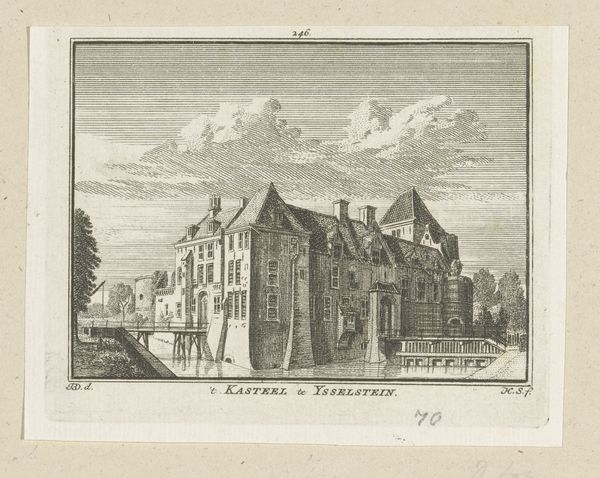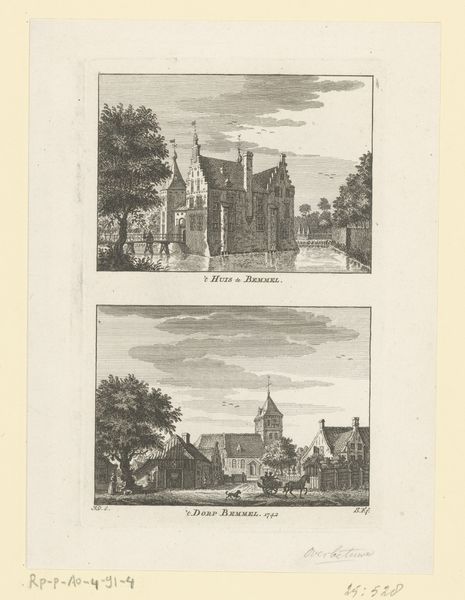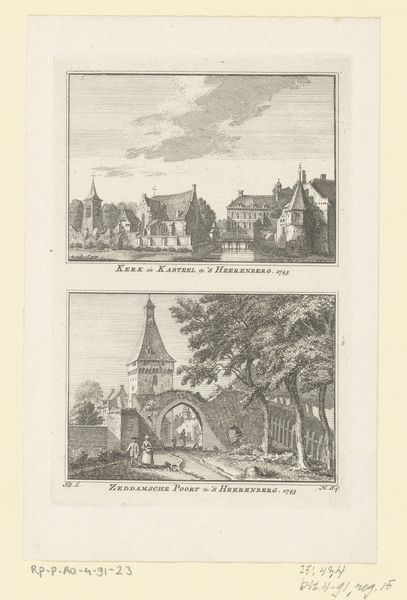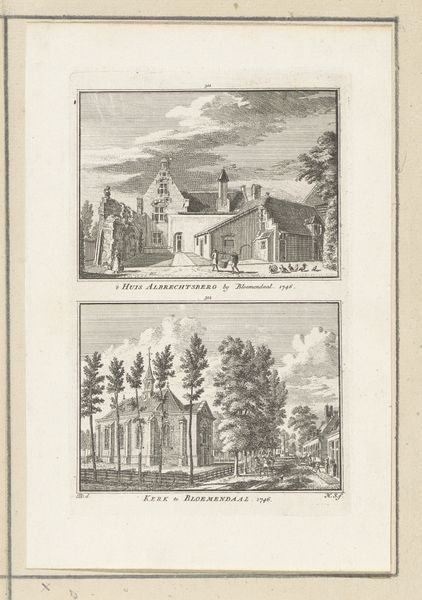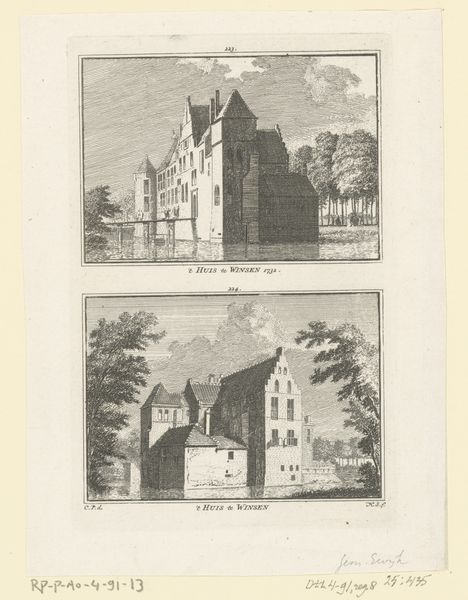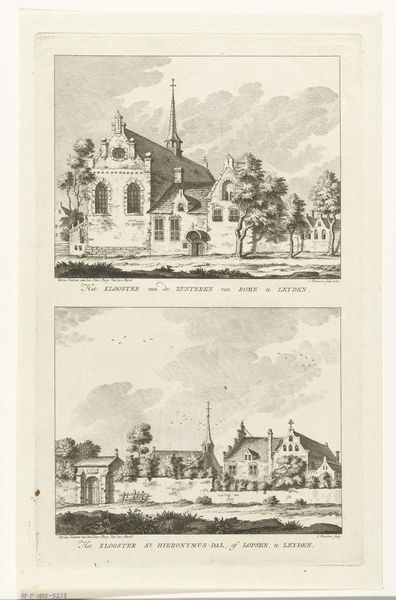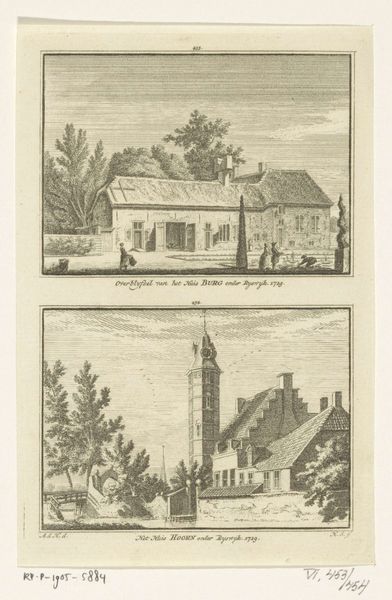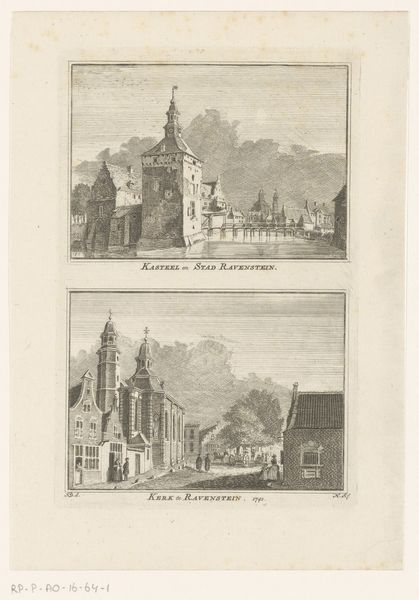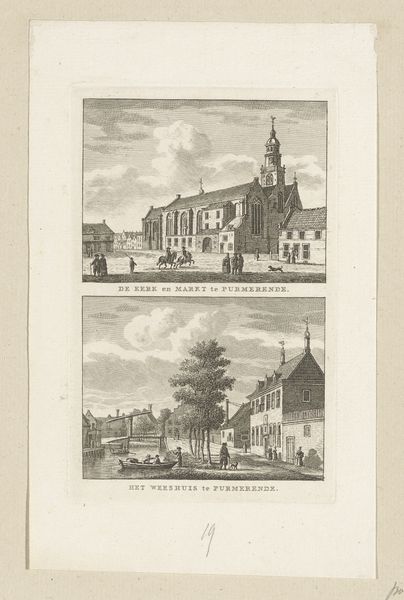
Gezicht op de kerk te Asten en gezicht op Kasteel Asten 1746 - 1792
0:00
0:00
hendrikspilman
Rijksmuseum
Dimensions: height 167 mm, width 110 mm
Copyright: Rijks Museum: Open Domain
Curator: Ah, here we have an engraving from sometime between 1746 and 1792 by Hendrik Spilman. It's entitled "Gezicht op de kerk te Asten en gezicht op Kasteel Asten," presenting two distinct views of Asten: the church and the castle. Editor: It's stark, isn’t it? In both images, there’s a sort of…unadorned directness. Like a cartographer meticulously mapping not just the place but the very soul of these buildings. Bleak? Honest? Hard to say which. Curator: Well, the bareness you perceive reflects the detailed, almost architectural rendering typical of topographical prints popular then. Prints such as this were documents but also expressions of civic pride, celebrating local landmarks. The print circulated widely, shaping ideas about this specific location in the Netherlands. Editor: Civic pride, eh? Look at that looming church spire! It’s more than just an architectural detail, it’s the town crier screaming for attention. As for the castle... stern, imposing; everything in its right place, yet still distant, closed off to everyone. Almost melancholic. I wonder, did Spilman realize what he was hinting at in these buildings, or was it purely documentation for him? Curator: Spilman would likely be thinking about how to accurately portray the town in the preferred visual style. Topographical prints such as this one weren’t spaces for emotional projection—rather, they showcased the town for outsiders, for potential visitors or investors even. It was as much advertising as art. Editor: Even in “advertising,” we expose ourselves, Curator. Every deliberate choice sings and shouts to be understood, and Spilman's emphasis on meticulous lines and his austere compositions may reveal just as much about Asten's mood and feelings as his decision to depict these specific buildings did. It speaks volumes. Curator: It’s always valuable to think of art within the time in which it was produced and how society viewed it, rather than just reading into it. Still, your perception provides food for thought on how artworks can subtly hold unspoken narratives. Editor: Precisely! Because it's through those narratives that art breathes… even when documenting civic landmarks in simple strokes of ink on paper.
Comments
No comments
Be the first to comment and join the conversation on the ultimate creative platform.

